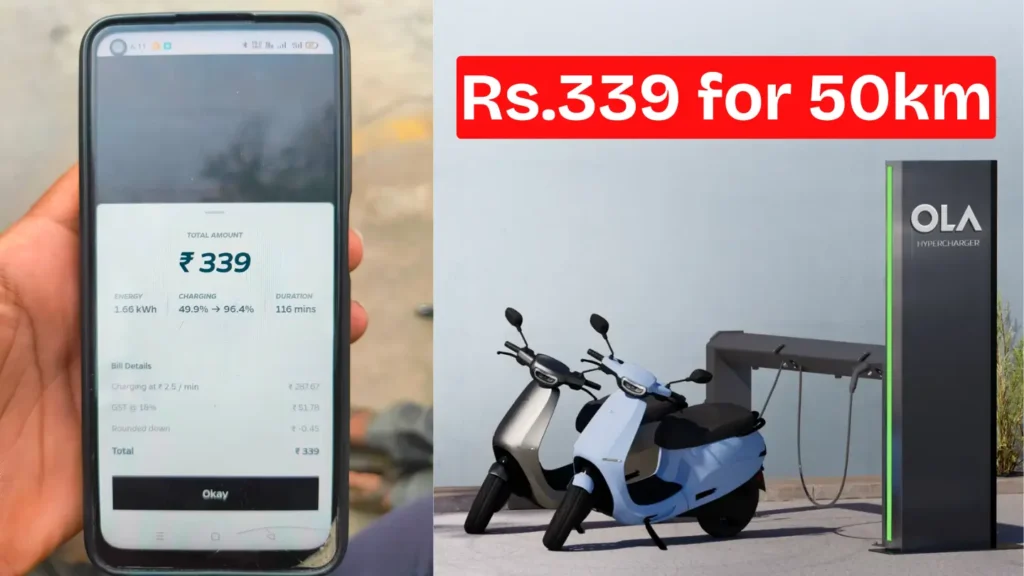
A tweet by Aslam Puthanathani has sparked a debate about the cost-effectiveness of Ola Electric scooters, particularly their Hypercharge charging system.
Posting on Twitter (X), Puthanathani claimed that running an Ola scooter for 50 kilometers costs a hefty Rs. 339, while a petrol scooter can cover the same distance for just Rs. 106.
He further criticized the scooter’s range, stating that although Ola claims a 135-kilometer range at full charge, 23 kilometers are “theoretical” and unusable in Eco mode, leaving a practical range of 112 kilometers.
According to him, 46% of the battery yields only 50 kilometers, raising questions about the scooter’s efficiency and affordability.
Ola Electric has been promoting its Hypercharger network as a game-changer for electric vehicles (EVs) in India, offering fast charging capabilities.
For some models, the company claims a 50% charge in 18 minutes can deliver a 75-kilometer range. However, Puthanathani’s tweet suggests that the costs don’t add up for everyday users.
He mockingly called it the “#EndEVage” rather than the “#EndICEage” Ola aims for, hinting that high charging expenses could deter EV adoption.
But how accurate is his claim? Ola Electric recently introduced pay-per-use charging rates: Rs. 2.5 per minute for Hyper Charging, Rs. 1 per minute for Fast Charging, and Rs. 0.5 per minute for Portable Charging.
Based on user reports, charging from 30% to 100% (70% capacity) costs around Rs. 57 via Hyper Charging.
For a scooter with a 112-kilometre usable range, this provides about 78 kilometres. Scaling that down, charging for 50 kilometres would cost roughly Rs. 37—far less than the Rs. 339 Puthanathani cited. Even with slower portable charging, the cost might reach Rs. 68, still nowhere near his figure.
While petrol scooters may indeed run 50 kilometres for Rs. 106, electric scooters typically offer lower running costs, contradicting Puthanathani’s numbers. His tweet might reflect a miscalculation or exaggeration, but it highlights a bigger issue: the need for clear pricing and education about EV ownership.
Ola Electric’s vision to replace internal combustion engines could stumble if users feel misled about costs. For now, this Twitter storm serves as a wake-up call for transparency in the EV revolution.
This post was last modified on March 2, 2025 1:17 pm
In a major stride toward sustainable mobility, the Himachal Pradesh Police have incorporated six custom-modified Tata Curvv electric vehicles into…
In India, the automotive and transport industry is undergoing significant changes. This transformation isn't just about improving roads and infrastructure;…
Montra Electric, the clean mobility brand from the prestigious Murugappa Group, has launched the All-New Super Auto, a next-generation electric…
Union Minister Nitin Gadkari (Minister of Road Transport and Highways of India) has once again made a bold statement that’s got…
India’s electric four-wheeler (E4W) market slowed in September 2025, following a record-breaking August, with 15,038 units sold, representing an 18%…
India’s EV market hit 1,04,056 electric two-wheeler sales in September 2025. TVS, Bajaj, and Ather led the chart, while Ola…
This website uses cookies.